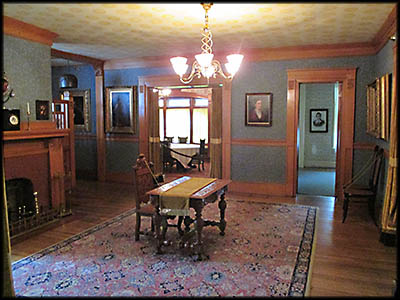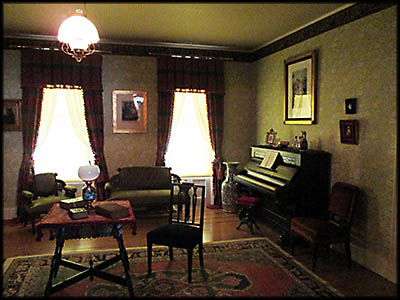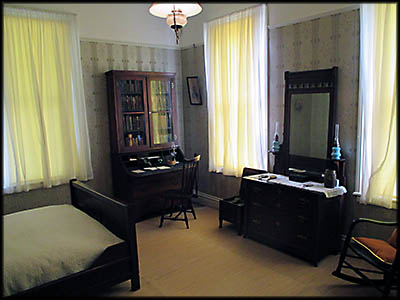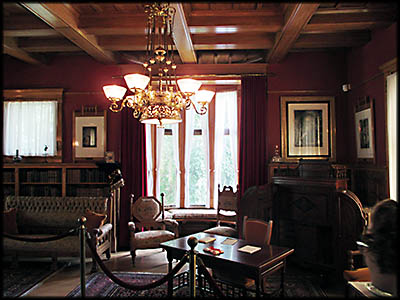President James A. Garfield House


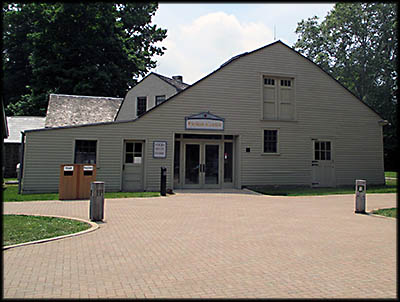
The Visitors’ Center was once a carriage house.
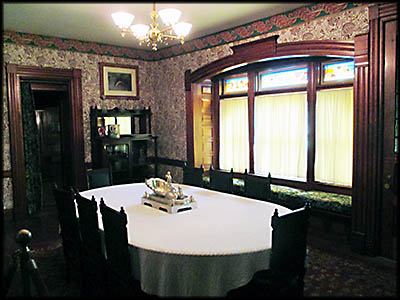
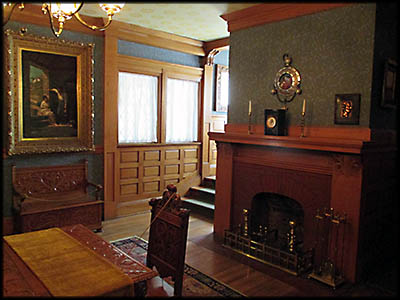
Rooms in the House

Back of the Garfield House

This stained glass window of Garfield was commissioned by his wife after his assassination. She covered the house with his images.
James A. Garfield, twentieth president of the United States, stopped applying for jobs and political positions after deciding God’s providence would supply them. He worked himself hard and, best I can tell, must never have slept to accomplish all the things he did in a day. He spoke a number of languages including Latin and ancient Greek, and had a wide variety of professions, such as teacher and preacher. As a politician, he served as an Ohio state senator, a U.S. Congressman, and president of the United States. Two years into his marriage to Lucretia Rudolph, he told his young wife that he thought their marriage had been made a mistake. He bought a large trek of land in Medina, Ohio, and ran it as a farm called Lawnfield. During the Civil War, in which he only served until 1863—he resigned to take his new Congressional seat in Washington at the request of President Lincoln—he entered as a colonel and left as a major general. Sworn into office as the U.S. president in March 1881, a disturbed office seeker named Charles J. Guiteau shot him on July 2. Although the wound did not kill him, his doctors did.
I learned all this during my visit to the James A. Garfield House in Medina, Ohio, a gem of a place to see. For one, the National Park Service runs it, so that alone means only top people worked to create the exhibits in the visitor’s center (the former carriage house), and they ensured that the restoration of the house in the 1990s met exacting historic standards. A park ranger, complete with hat and uniform, guided my traveling companion and I through the house. We took the standard tour, although several other specialty ones that are more expensive exist. These include, according to the park’s website, “Behind the Scenes, Behind the Ropes, and the Civil War Tour.”

For those of you who like authentic historic buildings, this is the place to come. All the furniture (and most if not all the light fixtures) in the house were there either during Garfield’s life or that of his wife, who added a memorial addition after her husband’s death. Even two original rugs still grace its floors. The most famous part of the house, the front porch where Garfield greeted thousands of Americans who came to listen to him during the presidential campaign of 1880, is the least interesting thing about it. The tour does an excellent job of mixing a few points of architecture and furniture (rarely all that interesting) with a great number of anecdotes about Garfield and his family. The only other building you can look into is Garfield’s campaign office, a tenement house he converted for that purpose. To see the inside of the amazing windmill, built by his wife after her husband’s death to pump water into the house, you have to take one of the special tours.
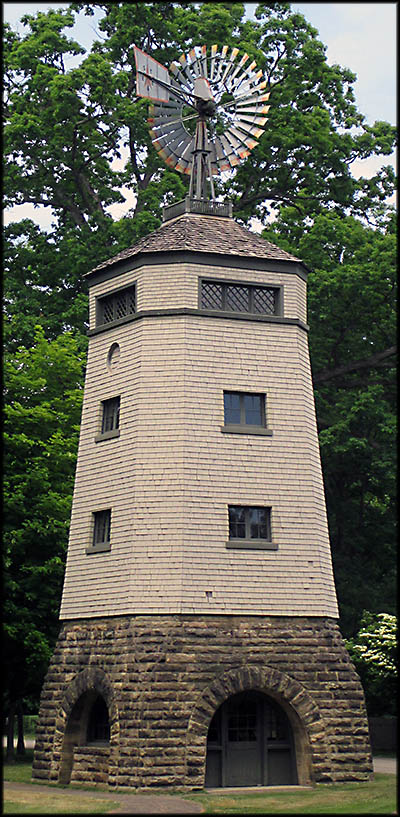
You have to take a special tour to see inside of the windmill.
The visitor’s center is also loaded with information about Garfield and includes a number of artifacts from his life as well as clips of audio quoting him about different topics. There is so much information packed into this small space, you could spend an hour or two reading every sign and looking at each item. You can also watch a twenty minute video about Garfield’s life, which is not bad but looks like it could have done with some better production values. Ken Burns it is not. Still, I would highly recommend visiting here if houses of dead presidents are your thing. You won’t be disappointed.🕜
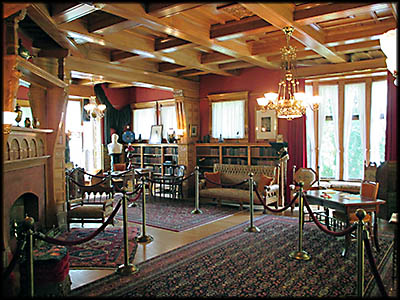
Library
